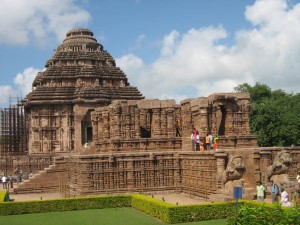
19°53′16″N 86°5′41″E
Map of KonarkAuto-rickshaws, taxis and cycle rickshaws are there for roaming around in the town. State bus services are rickety and uncomfortable while traveling unless you are on a budget. They are very good value in the ratio of adventure-to-rupees.
There are regular buses and terrain vehicles to Konark from Puri, which is 33km down the coast. The journey takes about an hour and the last bus back to Puri leaves from 6:30AM Alternatively, you can take an auto-rickshaw for ₹250-300 round trip, including waiting time.
Official guided tours leave from the Panthaniwas (Odisha Tourism) in Bhubaneswar (Tu-Su 6:30-6:30AM, ₹130 per person) and also visit Dhauli.

